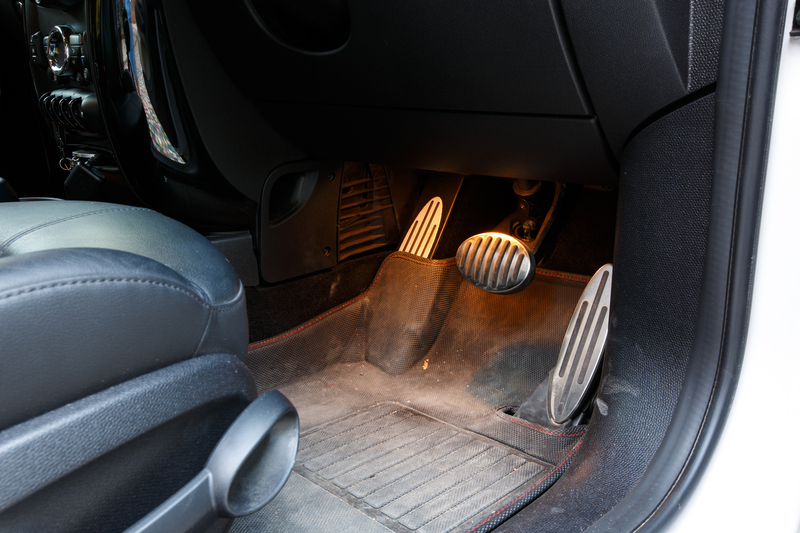Discover effective ways to keep your home dust-free and reduce allergens
Posted on 02/10/2025
Discover Effective Ways to Keep Your Home Dust-Free and Reduce Allergens
Are you searching for practical and effective ways to keep your home dust-free while significantly reducing allergens? Creating an allergen-free environment is crucial for your health, comfort, and peace of mind, especially if anyone in your household suffers from allergies or asthma. This comprehensive guide will provide actionable steps to minimize dust and allergens, enhance indoor air quality, and maintain a fresh, clean home all year round.
Why Is It Important to Reduce Dust and Allergens in Your Home?
Dust and allergens do more than just cause sneezing or coughing--they can lead to chronic respiratory issues, aggravate allergies, and reduce your quality of life. When you prioritize keeping your home dust-free, you:
- Improve indoor air quality
- Minimize potential allergy and asthma triggers
- Enhance sleep quality and general wellness
- Protect furnishings and electronics from dust damage
- Create a more comfortable and inviting living space
Let's explore the most effective strategies for a dust-free home and fewer allergens.

Top Strategies to Keep Your Home Dust-Free and Reduce Allergens
1. Maintain a Strict Cleaning Schedule
One of the most effective ways to reduce household dust and allergens is to establish a regular cleaning routine. Consistency is key to preventing dust from accumulating, especially in high-traffic areas and hard-to-reach spots.
- Dust surfaces at least once a week. Use a microfiber cloth or electrostatic duster, which trap dust rather than spreading it around.
- Vacuum carpets, rugs, and upholstery regularly. Make sure to use a vacuum cleaner with a HEPA filter to capture even the smallest particles.
- Mop hard floors after sweeping or vacuuming; use a damp mop instead of a dry one to avoid stirring dust.
- Don't forget overlooked areas, such as ceiling fans, blinds, baseboards, and vents.
2. Minimize Clutter for a Dust-Free Home
Clutter not only makes cleaning more difficult but also provides more surfaces where dust can accumulate. Decluttering is essential for an allergen-reduced environment.
- Choose minimalist decor to lower dust traps.
- Store belongings in closed containers or storage bins to limit exposure to air dust.
- Regularly sort through items in living areas, bedrooms, and closets, discarding what you don't need.
3. Control Indoor Humidity Levels
Indoor humidity has a direct impact on allergen control. Dust mites and mold thrive in humid conditions, potentially worsening allergy symptoms.
- Keep humidity between 40% and 50%--a hygrometer can help you monitor indoor moisture.
- Use a dehumidifier in damp rooms such as basements or bathrooms.
- Ventilate during and after showers and when cooking to prevent moisture buildup.
4. Invest in High-Quality Air Purifiers
Air purifiers with HEPA filters are highly effective in removing airborne particles, including pet dander, pollen, and even microscopic dust mites.
- Place air purifiers in commonly used rooms, especially bedrooms and living rooms.
- Clean or replace filters as recommended by the manufacturer for optimal performance.
If possible, choose an air purifier with a True HEPA filter for best results in reducing allergens.
5. Choose Hypoallergenic Bedding and Wash Regularly
Bedrooms are notorious for dust accumulation, especially from bedding, mattresses, and pillows. These areas can harbor dust mites and dead skin cells.
- Use hypoallergenic mattress and pillow covers that are dust mite-proof.
- Wash sheets, pillowcases, and blankets in hot water (at least 130?F/54?C) weekly.
- Consider replacing pillows every 1-2 years and mattresses every 8-10 years.
More Tips for an Allergen-Free Living Space
6. Keep Windows and Doors Closed During High Pollen Seasons
During spring and fall, pollen counts can be exceptionally high. While fresh air is beneficial, it's best to limit outdoor allergens from entering your home.
- Keep windows and doors closed during peak pollen times.
- Use air conditioning with a clean filter to cool your home.
- Wipe pets' paws when they enter from outside to avoid pollen transfer.
7. Regularly Change HVAC and Air Filters
Your HVAC system circulates air throughout your home and can either help filter out dust or contribute to allergen spread if not maintained.
- Change HVAC filters every 1-3 months for maximum efficiency.
- Opt for HEPA or high-efficiency allergy filters if your system supports them.
- Schedule annual professional duct cleaning to remove accumulated dust.
8. Limit Carpets and Opt for Hard Flooring
Carpet fibers are a magnet for dust, pet dander, and allergens. Hard flooring options like tile, hardwood, and laminate are much easier to keep dust-free.
- Replace old carpets with hard flooring for simpler maintenance.
- Use area rugs that are machine-washable when you want added comfort and style.
- Vacuum rugs frequently and clean them often.
9. Groom Pets Regularly
Pets contribute to indoor allergens through dander, saliva, and hair. Keeping your pets clean will minimize allergen spread, especially if they have access to living areas and bedrooms.
- Bathe and brush pets often, ideally outside.
- Wash pet bedding weekly to remove hidden dander.
- Restrict pets from sleeping on beds and furniture where possible.
10. Use the Right Cleaning Products
Some household cleaners contain harsh chemicals that can worsen allergies and irritate your respiratory system. Selecting the right products is key to safe, effective allergen removal.
- Choose fragrance-free and non-toxic cleaners.
- Microfiber cloths are highly recommended for trapping dust without spreading it around.
- Make your own natural cleaning solutions using ingredients like white vinegar and baking soda.
How to Keep Kids' Rooms Dust-Free and Allergen-Reduced
Children are especially susceptible to dust and allergens. Safeguard their health with these targeted strategies:
- Choose washable, hypoallergenic stuffed animals and wash them regularly.
- Keep toys neatly stored in closed containers or bins.
- Opt for minimalistic room designs to reduce dust-collecting surfaces.
- Vacuum and mop floors weekly.
Natural Ways to Eliminate Allergens and Household Dust
For those preferring eco-friendly cleaning, there are natural methods to banish dust and improve home air quality.
- Essential oils like eucalyptus and tea tree can be added to cleaning sprays for natural antimicrobial action.
- White vinegar mixed with water is excellent for wiping down surfaces and removing allergens.
- Open windows briefly during low pollen times to circulate fresh air.
- Houseplants such as spider plants and peace lilies naturally filter airborne toxins and improve indoor air.
Room-by-Room Guide to a Dust-Free and Allergen-Reduced Home
Living Room
- Vacuum sofas and upholstery weekly to remove dust and dander.
- Wipe down electronics which attract static dust.
- Launder throws and pillow covers often.
Kitchen
- Dust cabinet tops, refrigerator coils, and behind appliances.
- Keep countertops clutter-free and wipe them regularly.
Bedroom
- Wash bedding and curtains frequently.
- Keep under-bed storage in sealed bins.
Bathroom
- Control moisture with exhaust fans after showers.
- Wash bath mats and clean corners, where dust can collect unnoticed.

Frequently Asked Questions About Reducing Home Dust and Allergens
What causes dust and allergens to build up in the home?
Dust consists of dead skin cells, textile fibers, pollen, pet dander, and even soil brought in on shoes. Lack of ventilation, clutter, and infrequent cleaning contribute to accumulation.
How often should I clean to keep my home dust-free?
For homes with allergy sufferers, light cleaning every 2-3 days and thorough cleaning weekly is best. Focus on high-traffic and sleeping areas.
Which rooms collect the most dust?
Bedrooms and living rooms, due to textiles and soft furnishings, tend to collect the most dust. Monitor these regularly to maintain a dust-free home.
Does an air purifier really help with allergens?
Yes! A high-quality HEPA air purifier can remove over 99% of common airborne allergens, offering substantial relief for allergy and asthma sufferers.
Final Thoughts: Enjoy a Cleaner, Healthier Home
Maintaining a dust-free home and reducing allergens isn't just about appearances--it's an investment in your family's health and well-being. By combining smart cleaning routines with proactive habits, air filtration, and allergen control strategies, you'll transform your living spaces into a true sanctuary.
- Start with small, manageable steps and build new habits over time.
- Consult with an allergy specialist if you can't control symptoms with environmental changes alone.
With these effective ways to keep your home dust-free and reduce allergens, you'll breathe easier and enjoy a more comfortable home throughout every season.
Take action today--your lungs, your comfort, and your loved ones will thank you!


